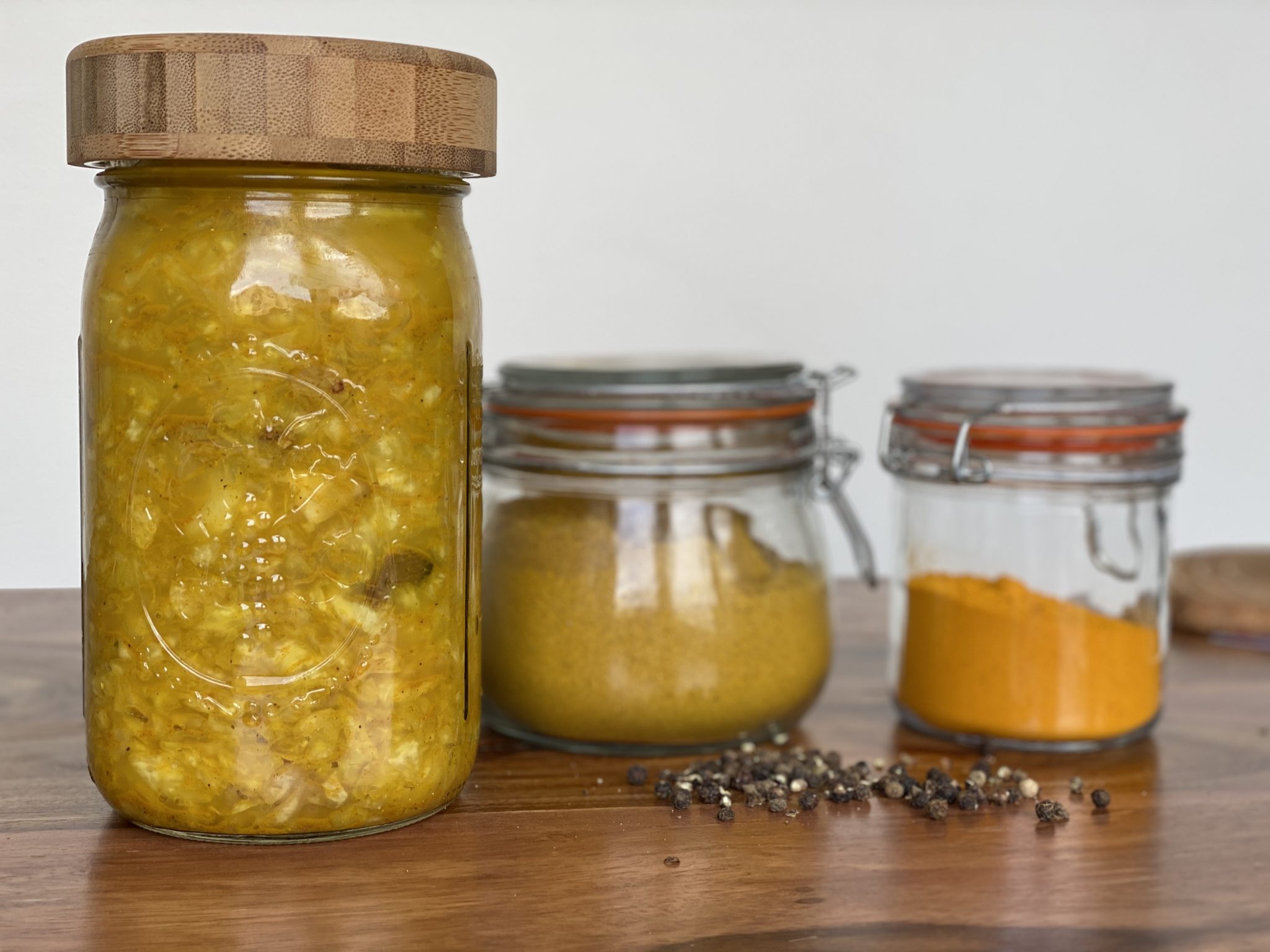
Curry Raisin Kraut
This sunshine yellow ‘kraut and its peekaboo raisins are a tongue-hugging pleaser. It’s a predictable sidekick to Indian and Thai curries, plus makes a cozy garnish for rainy day staples like soup and cheese toasties. 😌
If you’re not on team raisin, swap for dried apricots, cranberries, dates, or omit entirely. You can tweak this recipe further by cranking up the heat with cayenne, smoothing it out with cinnamon or nutmeg, or adding grated carrots and sliced onion.
Now, let’s get this perky little kraut started!
Curry Raisin Kraut

Ingredients
- 1kg cabbage (~1 small head)
- 1/4 cup organic, preservative-free raisins
- 3 teaspoons non-iodized salt
- 1/8 teaspoon cracked pepper
- 1 teaspoon mild curry powder
- 1/4 teaspoon turmeric
Instructions
- Wash the cabbage and remove the thick outer leaves. Set aside a couple of unblemished ones for later.
- With a sharp knife, cut the cabbage into quarters keeping the core. Shred everything (including the core) with a knife, grater, or mandolin. Put the shreds into a large bowl.
- Sprinkle in the 3 teaspoons of non-iodized salt over the cabbage shreds.
- Break down the shredded cabbage by repeatedly squeezing the shreds in your hands for several minutes, or by smashing with a mortar, rolling pin, or pounding device. Do this until the cabbage is dripping with juices when you squeeze a fistful in your hands. It may take a few minutes.
- Next, combine the remaining spices and raisins and toss thoroughly until well distributed.
- Add the contents to a 1L jar. As you add each handful, press down firmly to reduce air bubbles and push the brine upwards. Leave at least 1 inch of headspace.
- Take one of the reserved outer cabbage leaves (or a piece of baking paper) and cut it into a circle the diameter of your jar. Place this atop the mixture.
- Optional step: place a ferment weight (or DIY one like a sandwich bag filled with water or a clean rock) on top of the cabbage leaves. This helps keep everything submerged.
- Screw the lid on and store the jar on a plate somewhere out of direct sunlight.
- “Burp” the jar daily by unscrewing and re-screwing the lid quickly (no need to remove it entirely). If there is little or no pressure, you can burp less frequently.
- After 5 days, taste the sauerkraut using a clean fork. This is the soonest it will be done, though the flavour will develop more over time (1 week is ideal, you can leave it much longer). The kraut should be tangy when complete. In warmer temperatures it will ferment faster, when it’s cooler it will finish slower.
- Once done to your liking, move the sauerkraut to the fridge where it will keep for ~6 months.
Hot ‘n Salty Tips
For preventing common mistakes, check my ferment fail guide here. Here are some quick ‘kraut tips:
- Use fresh cabbage when you can. Organic is also ideal, but if it’s not in your budget or availability, don’t fret.
- Get creative! You can increase the heat on this mix by using hot curry powder or cayenne. A pinch of smoky paprika will subtly shift directions too!

